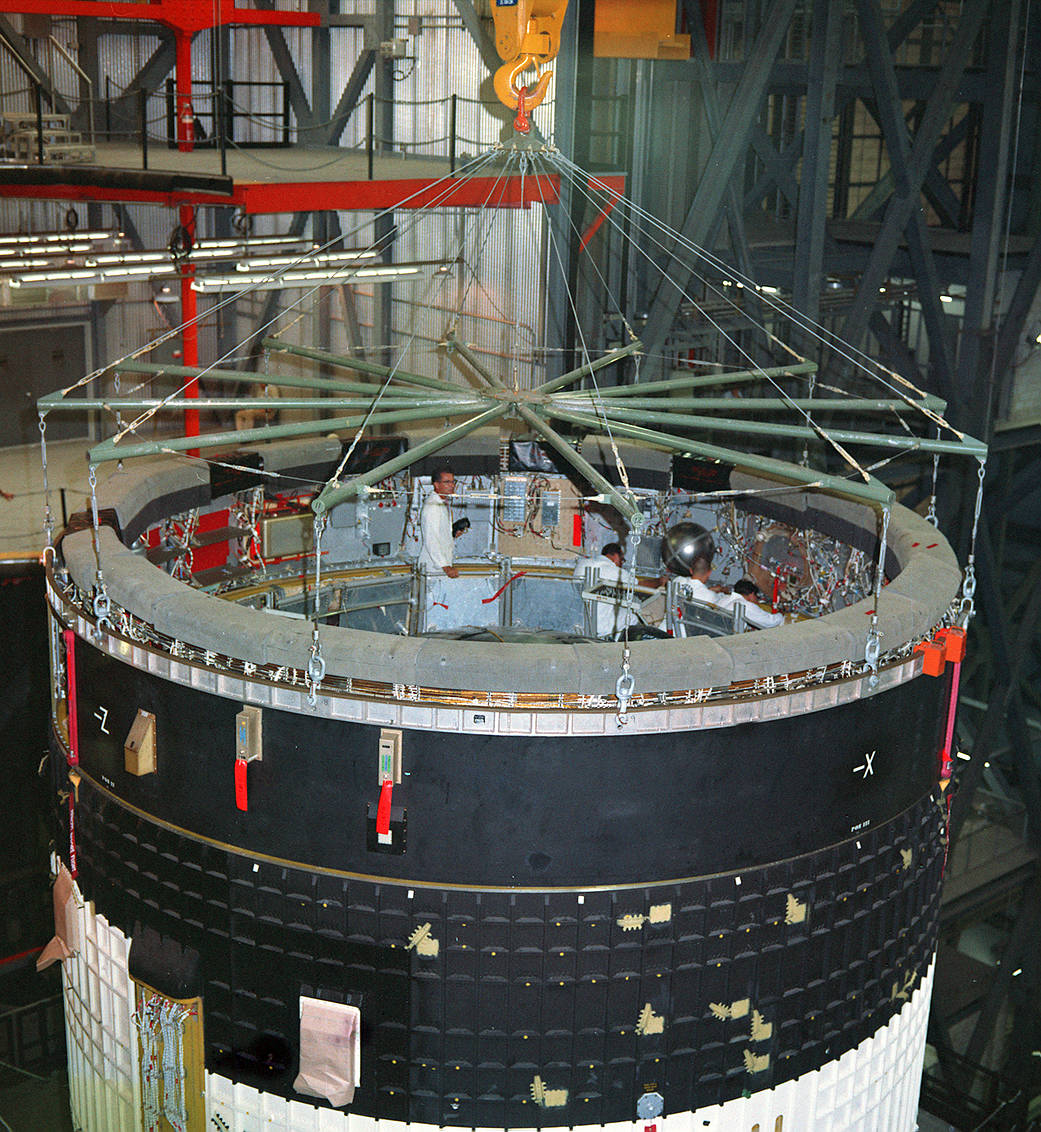This week in 1967, stacking of the AS-501 stages for the Apollo 4 mission began at NASA’s Kennedy Space Center and was completed with the placement of the Instrument Unit on Feb. 25. The Apollo 4 mission was the first all-up test of the Saturn V rocket, designed to test all aspects of the Saturn V launch vehicle. Mission objectives included testing of structural integrity, compatibility of launch vehicle and spacecraft, heat shield and thermal seal integrity, overall reentry operations, launch loads and dynamic characteristics, stage separation, launch vehicle subsystems, the emergency detection system, and mission support facilities and operations. The mission was deemed a successful test. The Saturn V was designed at NASA’s Marshall Space Flight Center. Now through December 2022, NASA will mark the 50th anniversary of the Apollo Program that landed a dozen astronauts on the Moon between July 1969 and December 1972, and the first U.S. crewed mission — Apollo 8 — that circumnavigated the Moon in December 1968. The NASA History Program is responsible for generating, disseminating, and preserving NASA’s remarkable history and providing a comprehensive understanding of the institutional, cultural, social, political, economic, technological and scientific aspects of NASA’s activities in aeronautics and space. For more pictures like this one and to connect to NASA’s history, visit the Marshall History Program’s webpage.
2 min read





























